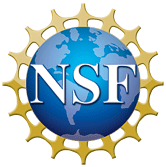Learning Modules: Difference between revisions
No edit summary |
No edit summary |
||
| Line 5: | Line 5: | ||
=== Chapter 0: ''Overview'' === | === Chapter 0: ''Overview'' === | ||
This module is motivated by understanding drivers of land surface change and hazard during the the 2013 Colorado floods and landslides. This chapter sets the stage for the this extended analysis. Students are introduced to Landlab, a Python-based modeling library, that is well-suited to building numerical models of surface dynamics that are custom-built by the user. | |||
=== Chapter 1: ''When it rains, it pours (sometimes)'' === | === Chapter 1: ''When it rains, it pours (sometimes)'' === | ||
# ''''' | Chapter 1 focuses on describing and simulating rainstorm statistics both from data and via simulation. Student learning outcomes include: | ||
# ''''' | # '''''Analyzing''''' time series data from a tipping bucket rain gauge. | ||
# ''''' | # '''''Describing''''' and '''''comparing''''' storm properties. | ||
# ''''' | # '''''Simulating''''' stochastic rainfall using a Landlab component. | ||
# '''''Explaining''''' how well historic events are captured by simulation. | |||
=== Chapter 2: ''From rainfall to runoff'' === | === Chapter 2: ''From rainfall to runoff'' === | ||
# ''''' | Chapter 2 focuses on building Landlab grids to with which to add process components. Student learning outcomes include: | ||
# ''''' | # '''''Constructing''''' and '''''interpreting''''' a model of surface water hydrology. | ||
# ''''' | # '''''Explaining''''' how root zone soil moisture evolves through time. | ||
# ''''' | # '''''Planning''''' and '''''executing''''' a model that couples two Landlab components. | ||
# '''''Critiqueing''''' your hydrological model and '''''modifying''''' it to route water. | |||
=== Chapter 3: ''But will the hillside fail?'' === | === Chapter 3: ''But will the hillside fail?'' === | ||
# ''''' | Chapter 3 focuses on applying such models to real-world topographic data to assess landslide hazard. Student learning outcomes include: | ||
# ''''' | # '''''Applying''''' your model using Data Components to import topography. | ||
# ''''' | # '''''Explaining''''' how topography and water fluxes influence the Factor of Safety. | ||
# ''''' | # '''''Executing''''' a dynamic model of soil moisture driven by stochastic rainfall.''''' | ||
# '''''Analyzing''''' how the probability of hillside failure varies in space and time. | |||
=== Chapter 4: '' Applying your | === Chapter 4: '' Applying your skills === | ||
Chapter 4 is a more open-ended exercise to encourage students to apply their skills in a new, but related, context. Specifically, students are pointed to other educational resources on the CSDMS website to help them practice building their own Landlab models. The challenge posed to the student is to use Landlab to predict river flooding in response to stochastic rainfall. | |||
Revision as of 11:09, 15 September 2025
Learning Modules
These extended learning modules...[Notes: High level summary belongs here for each module, which will then link to a separate landing page for each module that has more details. For now, putting everything here since we only have one module.]
Learning Module 1: Simulating the geomorphic impacts of extreme rainfall using Landlab
Chapter 0: Overview
This module is motivated by understanding drivers of land surface change and hazard during the the 2013 Colorado floods and landslides. This chapter sets the stage for the this extended analysis. Students are introduced to Landlab, a Python-based modeling library, that is well-suited to building numerical models of surface dynamics that are custom-built by the user.
Chapter 1: When it rains, it pours (sometimes)
Chapter 1 focuses on describing and simulating rainstorm statistics both from data and via simulation. Student learning outcomes include:
- Analyzing time series data from a tipping bucket rain gauge.
- Describing and comparing storm properties.
- Simulating stochastic rainfall using a Landlab component.
- Explaining how well historic events are captured by simulation.
Chapter 2: From rainfall to runoff
Chapter 2 focuses on building Landlab grids to with which to add process components. Student learning outcomes include:
- Constructing and interpreting a model of surface water hydrology.
- Explaining how root zone soil moisture evolves through time.
- Planning and executing a model that couples two Landlab components.
- Critiqueing your hydrological model and modifying it to route water.
Chapter 3: But will the hillside fail?
Chapter 3 focuses on applying such models to real-world topographic data to assess landslide hazard. Student learning outcomes include:
- Applying your model using Data Components to import topography.
- Explaining how topography and water fluxes influence the Factor of Safety.
- Executing a dynamic model of soil moisture driven by stochastic rainfall.
- Analyzing how the probability of hillside failure varies in space and time.
Chapter 4: Applying your skills
Chapter 4 is a more open-ended exercise to encourage students to apply their skills in a new, but related, context. Specifically, students are pointed to other educational resources on the CSDMS website to help them practice building their own Landlab models. The challenge posed to the student is to use Landlab to predict river flooding in response to stochastic rainfall.
